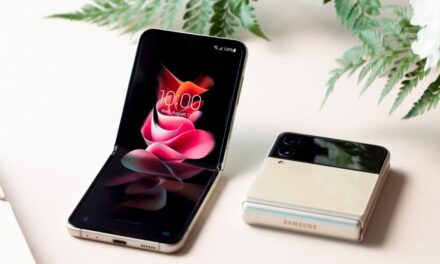
The best soft-shell suitcases you need to consider before your next vacation
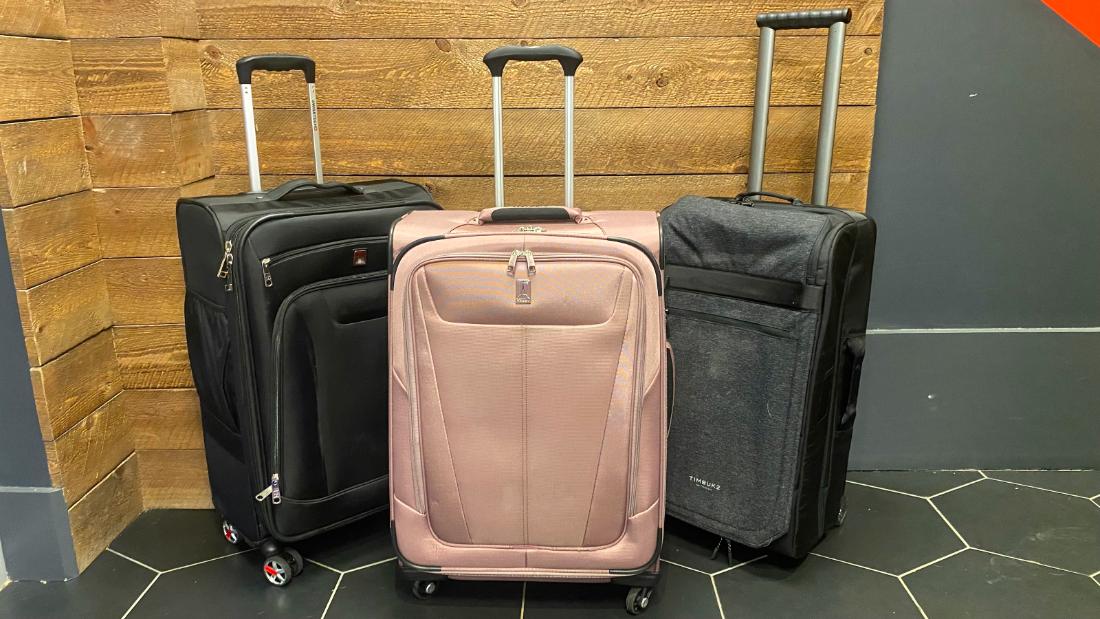
Whether you’re going on a longer vacation or want the extra room to bring back gifts, checked suitcases are a must. And since they have to endure the beating of traveling in cargo, finding one that’s durable and one that’s easy to roll around and looks good can be difficult. That’s why we got our hands on 15 of the top checked soft-shelled — or soft-sided — suitcases on the market to see which one is the best.
We tested all the bags for packability, durability, usability and more, and after months of rigorous testing, three suitcases stood out above the rest.
Best overall soft-shelled checked suitcase
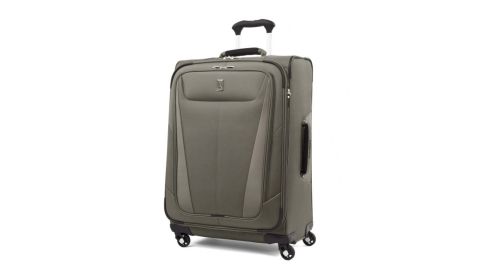
The Travelpro Maxlite 5 was the most well-rounded suitcase we tested. With comfortable carrying handles, solid durability and fantastic maneuverability, this bag is perfect for your next trip.
Runner-up and best two-wheeled soft-shelled checked suitcase
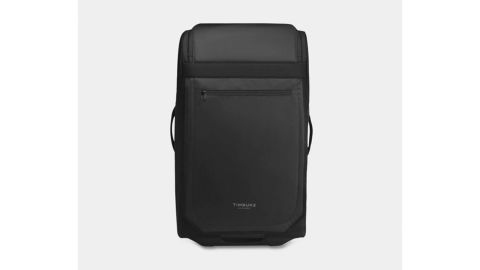
If you need a suitcase with even more durability, look no further than the Timbuk2 Copilot. With a thick, sturdy material, simple yet helpful organization features and thick wheels that make rolling around a breeze, this piece of luggage can withstand any adventure you take it on.
Best budget soft-shelled checked suitcase
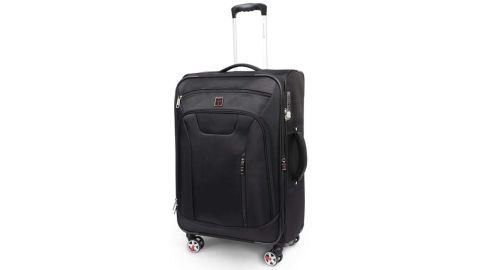
The SwissTech Executive is lightweight, has a large capacity, rolls smooth and — best of all — costs just less than $100. If you’re looking for a cheap suitcase that outperforms its price tag, this is the one for you.
Best overall soft-shelled checked suitcase: Travelpro Maxlite 5 25-Inch Expandable Spinner
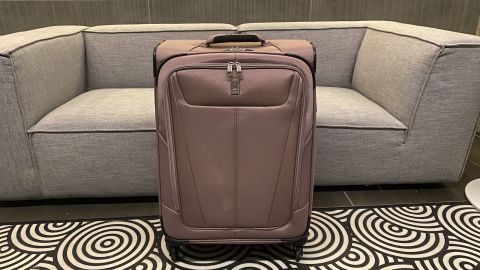
The Travelpro Maxlite 5 strikes a fantastic balance between weight, capacity, durability and price. As one of the best scoring bags we tested, it checked all the boxes of what we looked for in a reliable suitcase.
Starting off, the Travelpro Maxlite 5 was solidly durable. It came out of the drop test with only slight scuffing. And after rubbing it on the sidewalk, it had just a little bit of pilling on the fabric. It didn’t fare quite as well in the abrasion test as our runner-up, the Timbuk2 Copilot, but was still one of the more durable bags we tested.
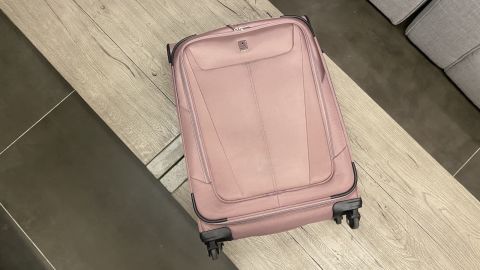
The handle on the Travelpro was a bit wobbly but not nearly as bad as some of the other suitcases we tested. However, the handle has only a slight ergonomic grip and only two height settings, which does the job but leaves a little bit to be desired.
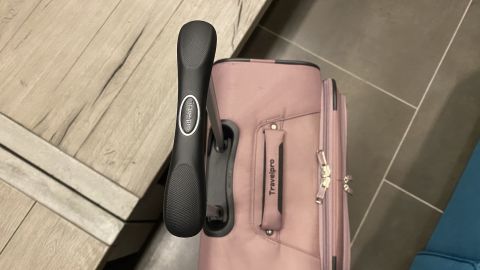
The interior organization of the Travelpro was also solid, but nothing outstanding. It features two horizontal straps that can be ratcheted down to compress your belongings, and the top shell has a large mesh pocket with a zipper. This isn’t anything wild and resembles what you’ve probably seen from other suitcases, but in our testing, we found that fancy packing and compression systems often come with a hefty price tag, which is why we like the simplicity of the Travelpro Maxlite 5.
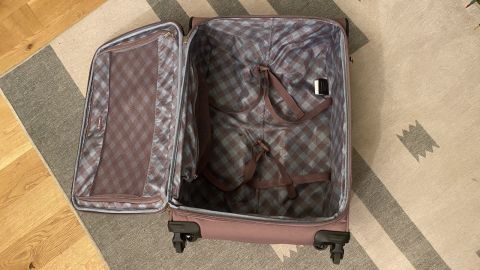
Where the Travelpro Maxlite 5 really beat the other bags we tested is in its balance of capacity, weight and maneuverability. At 7.4 pounds, it was tied with the American Tourister Belle Voyage as the lightest suitcase, and it fit our entire standard pack with a little bit of room to spare. Its spacious interior ensures you can fit everything you need — even for extended trips — but its large size doesn’t deter from its nimbleness on the sidewalk. During our testing, it felt smooth to roll and easy to whip around and change direction. The wheels are a bit smaller than we’d like and got stuck on a handful of cracks, but they weren’t the worst ones we tested by any means.
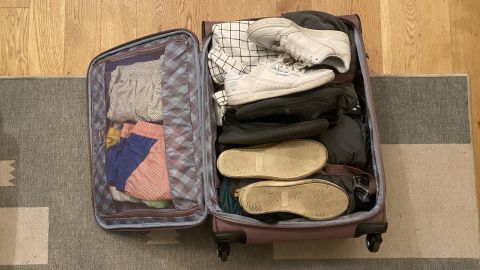
Another benefit of the Travelpro Maxlite 5 is its cushioned, super-comfortable side handles. While other suitcases had hard, thin, plastic handles that dig into your hand when you have to carry your suitcase up and down stairs, the Maxlite 5 features thick and supportive handles that were the most comfortable of any bag we tried.
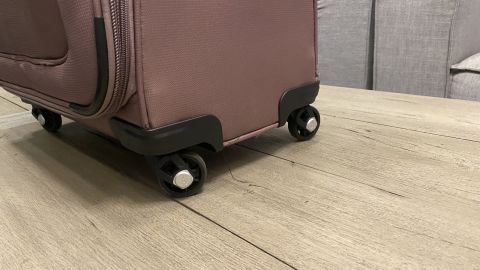
If you’re searching for a trusty checked suitcase, we think the Travelpro Maxlite 5 strikes the perfect balance between simplicity, durability, performance and price. There aren’t any fancy bells and whistles, but it will reliably get the job done and won’t put too big of a dent in your wallet. Plus, its selection of seven color options is tied for the most out of any suitcase we looked at, and its lifetime warranty ensures it will be by your side on any trip for years to come.
Runner-up and best two-wheeled soft-shelled checked suitcase: Timbuk2 Copilot Luggage Roller
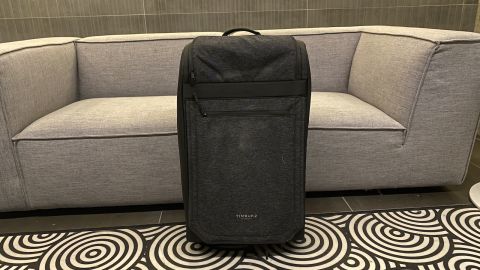
If you want a sturdier bag for rougher adventures, the Timbuk2 Copilot Luggage Roller is the suitcase for you. While it wasn’t as nimble as the Travelpro Maxlite 5 due to having two wheels compared to the Maxlite’s four, the Copilot fits plenty, rolls smoothly and is tough enough to take anything you throw at it.
The main allure of the Copilot is definitely its durability. Between our drop tests, abrasion tests and stain tests, it outperformed every other suitcase we tried. When we kicked it down a flight of stairs, it barely got a scratch, and after rubbing it facedown on the sidewalk, it had only slight discoloration. The thick fabric is sure to withstand all the bumps, scrapes and drops inherent to travel.
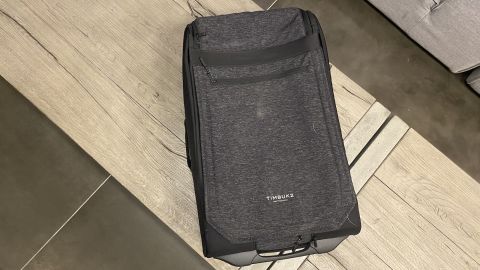
Besides its outstanding durability, the Timbuk2 Copilot has a similar interior capacity to the Travelpro Maxlite but features a clamshell design that allows you to pack plenty in both halves. The organization on the inside is pretty basic, with one large mesh zipper covering one half and the other half with two mesh zipper-separated sections. The outside, on the other hand, features a few nifty organizational tools, such as an expandable top compartment (perfect for shoes or toiletries), a padded laptop sleeve and a zipper that gives you quick access to the inside of the bag without having to open up the whole thing.
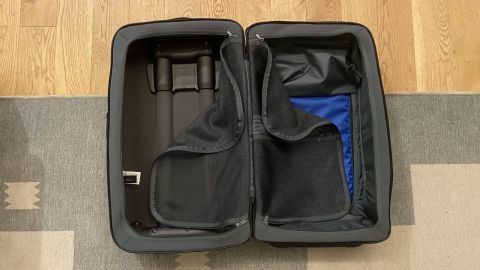
The Timbuk2 Copilot was easy to roll around, but since it has only two wheels, you’ll always be pulling it behind you. However, the two wheels are extra large in size, so they rolled right over even the biggest cracks on our Brooklyn block. The two-wheeled design means it isn’t as nimble as many of its four-wheeled counterparts that we tested, but for a big bag, it’s quite maneuverable.
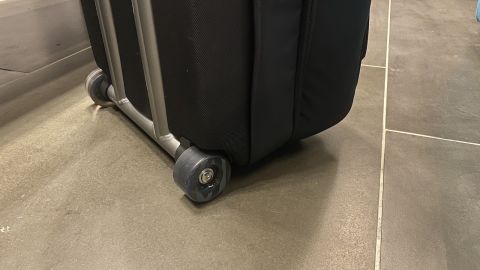
At $279, the Timbuk2 Copilot is definitely a bigger investment than the Travelpro Maxlite 5. However, the Copilot is made with sturdier fabric and is built to last longer on rougher journeys. So, if you’re looking for a tougher bag and you’re willing to sacrifice maneuverability, the Timbuk2 Copilot is the best suitcase for you.
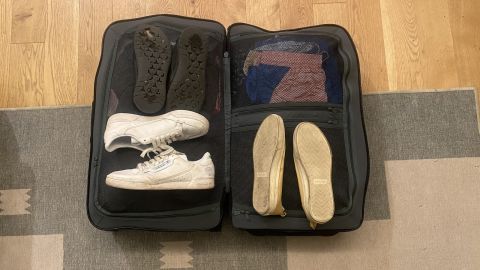
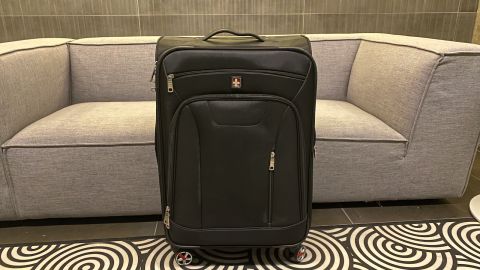
The Travelpro Maxlite 5 and the Timbuk2 Copilot are both fantastic suitcases, but if they’re both too pricey for your taste, then the SwissTech Executive is definitely worth considering. The SwissTech scored well in our testing, specifically because it’s light, it’s easy to pack, it has a comfy handle and it even has a TSA-approved lock — all for just less than $100.
The SwissTech was actually one of the more feature-filled bags we tested in the low- to mid-price range. It’s our only winning pick that has a TSA-approved lock, it’s got padded side handles and a comfortable, ergonomic telescopic handle, so both unloading it from the car and rolling it around the airport is a breeze.
This bag was another one of the lightest options we tested, weighing in at 7.8 pounds. It also has a large capacity, fitting our entire standard pack with a tiny bit of room to spare. This balance of weight and capacity make it the perfect bag for any extended trip where you’re trying to stay under an airline’s dreaded 50-pound limit.
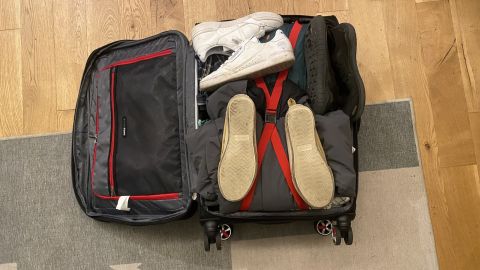
The SwissTech also had decently large wheels, meaning it didn’t get stuck on many cracks, and its lightweight build gave it a nice nimbleness when we rolled it around. The ergonomic handle fits right into your hand and makes maneuvering this bag a dream.
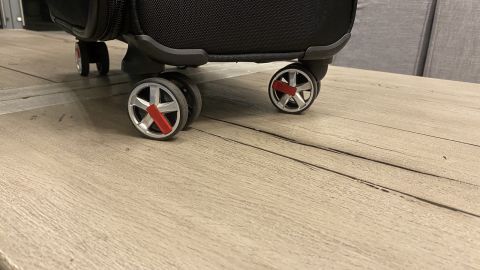
The interior isn’t a showstopper, but it does have basic organization, such as an X-shaped strap in the main compartment and a zippered pocket in the top flap. The outside has three pockets to keep all your belongings organized and a TSA-approved lock that secures the zippers to the main compartment with a three-digit combination.
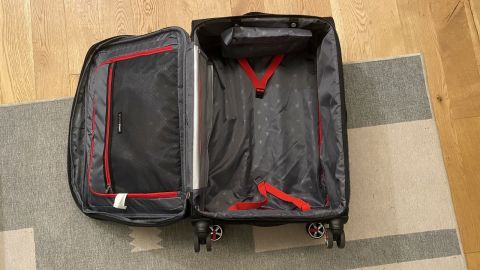
The SwissTech was truly a great suitcase; in fact, it was almost our top pick overall but for a few setbacks. Namely, our abrasion test ruined the fabric around the front zipper, which didn’t render it unusable, but it also didn’t look nice. The bag we ordered arrived without a box, with the shipping label stuck right onto the suitcase. While our bag wasn’t damaged during the shipping process — just a little squished and misshapen — we’d prefer to see things arrive boxed to add an extra layer of security.
The bag had a few other discoloration spots from the abrasion test but only suffered a couple of small scuffs and bumps when we kicked it down stairs. While it’s not as sturdy as our other picks, the SwissTech is definitely durable enough to survive the roughhousing on your annual family vacation.
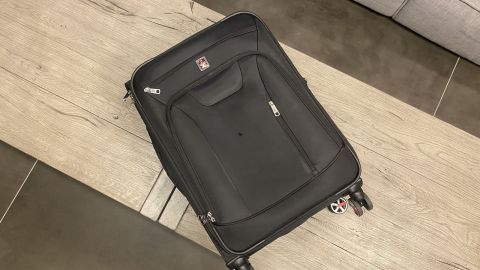
If you can look past the shipping and its good but not perfect durability, the SwissTech Executive is a fantastic do-it-all bag with the added bonus of extra security. If that’s all you’re looking for or need in a suitcase, you really can’t go wrong with the SwissTech, especially given its just less than $100 price tag.
There are countless design features in the suitcases we tested, and while some differences are small, others are pretty major. To help you figure out which features you want and which ones you’re fine passing on, we’ve laid out all the pros and cons of the big design differences we saw.
First things first, you should decide how many wheels you want on your suitcase. Nowadays, four-wheeled spinners with 360-degree motion are the standard because they make for an easier and smoother rolling experience. In our testing, we loved how four-wheeled suitcases allowed us to roll the suitcase beside or even in front of us while walking.
The downside of this, however, is that in most cases, the wheels on these bags are quite small, making them more prone to getting stuck on cracks and bumps. If you’re expecting to drag your suitcase through any terrain rougher than a sidewalk, you might want to consider a two-wheeled option. Two-wheelers aren’t nearly as maneuverable or nimble as four-wheeled spinners, but they tend to have larger wheels, and the fact that you always roll them behind you gives you a leg up when traveling over rough surfaces. Of course, pulling a suitcase behind you is more taxing on your arms, so you might not be able to tow a two-wheeler as long as a 360-degree spinner.
In addition to a smaller size, the wheels on 360-degree spinners are often more exposed, while two-wheelers have more recessed wheels. This means four-wheeled options are more prone to damage over time.
In our opinion, the other big difference is the inclusion of a TSA-approved lock. Many hard-shell checked luggage options have a lock that secures the suitcase’s zipper, but surprisingly, only a few of the soft-shell suitcases we tested were equipped with one. In our eyes, the only downside to getting a bag with a lock is aesthetic, as some of them have a wire-locking mechanism like the SwissTech Executive that’s somewhat of an eyesore, especially in contrast to the sleek locks you’ll find on hard-shell bags like the Away.
Another factor you’ll want to consider is whether you want your suitcase’s handle frame to be mounted internally or externally. Internal designs protect the handle from any damage while you’re traveling; however, when you pack certain suitcases with an internal design to the brim, the contents of the bag push on the handle, making it much harder to pull in and out. An internal build also means you have less room to pack, since the handle takes up a small — but sometimes important — amount of space on the interior
On the other hand, the Briggs & Riley bags we tested feature the handle completely on the external part of the suitcase. This meant that there was more room to work with while packing and no matter how much we stuffed the suitcase, the handle came up and down as smooth as butter. But, of course, the external hardware is more prone to damage, and we found carrying the suitcase up the stairs particularly uncomfortable with an external frame because it dug into our side.
We tested 15 suitcases over the course of two months to find the best ones on the market. To do that, we put each suitcase through tests that stressed its packing capacity, durability, rolling performance and more.
We broke up our tests into three categories: durability, usability, and design and build quality. Within each category, we conducted various tests and examined every aspect of each suitcase from wheel size to warranty.
Here’s a breakdown of all the tests we ran:
- Drop test: We pushed each bag down a flight of stairs and looked for any damage to the wheels or shell and took note of any scuffs, scratches, dents or any other damage.
- Abrasion test: We rubbed each suitcase facedown on the sidewalk outside our building back and forth five times. We examined the wear and tear and took note of any damage, including discoloration, scratches and rips.
- Stain test: We spilled dark soda on each suitcase and took note if it ran off the suitcase’s material, if it soaked through and if it left a stain.
- Handle durability: We rattled around the handle of each suitcase to see how sturdy and stable it was. We examined if it was hard to pull in our out, especially when the bag was packed full.
- Measurements: We measured the internal space of each suitcase with a tape measure.
- Unpacked weight: We weighed each unpacked suitcase on the same scale.
- Capacity test: We created a set of clothes and accessories as a standard pack. We then packed each suitcase with that pack to see how much it fit and noted what elements couldn’t fit and how tight the pack was.
- General maneuverability: We rolled each suitcase around our building and took note of how easy it was to move around, weave and change direction. We also took note if the suitcase had a tendency to tip over or if it could stand up by itself.
- Wheel maneuverability: We took note of the suitcase’s wheel size and rolled it over different sized cracks and bumps to see which ones the wheels would get stuck on.
- Carrying experience: We carried each suitcase up and down three flights of stairs using all available handles to see how comfortable it was.
- Handle: We counted how many height settings each suitcase had and whether the settings were comfortable when pulling.
- Zippers: We zipped and unzipped the suitcase multiple times both when it was empty and when it was packed full and took note of any snags or resistance along with the general feel.
- Additional interior features: We counted the number of internal organization features, such as pockets, compression straps and garment bags.
- Additional exterior features: We counted the number of external organization features such as pockets, expansion zippers and TSA-approved locks.
- Locking capability: We took note if the suitcase featured a lock and made sure it was TSA-approved.
Design and build quality
- Color and design options: We counted the number of available colors and designs for each suitcase.
- Design: We judged how each suitcase looks and ranked them from best to worst.
- Warranty: We researched the warranty of each suitcase and ranked them from best to worst.
Away The Expandable Medium
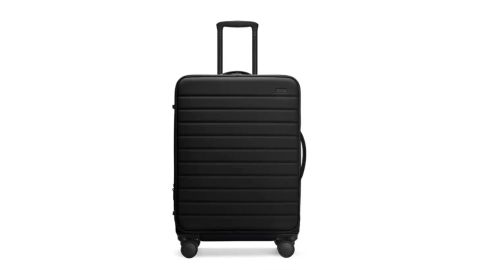
Away’s The Expandable Medium suitcase was a top contender, with a durable build, smart interior organization and smooth wheels. However, since we started testing, Away has discontinued the bag. If you want an Away bag, the hard-shelled option is our pick for the best hard-shelled carry-on and hard-shelled checked suitcase.
Travelpro Platinum Elite 25-Inch Expandable Spinner
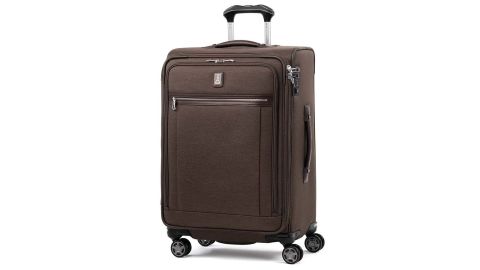
The Travelpro Platinum Elite was a fantastic suitcase. It had great maneuverability, tons of interior packing features, solid durability and large, smooth wheels. Our biggest issue with it is its price. It offers more features than our overall winner, the Travelpro Maxlite, but not enough to justify spending an extra $200. If you have the extra cash and like the look of the leather handles and feature-filled interior compression, you won’t be disappointed with the Travelpro Platinum Elite.
Samsonite Armage II Medium Expandable Spinner
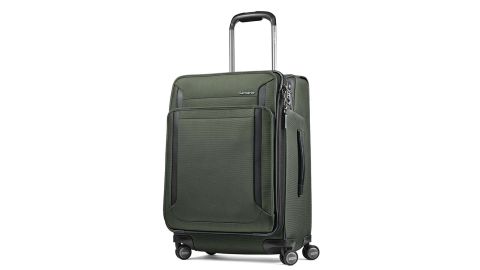
The Armage II from Samsonite was one of the heaviest bags we tested; however, it also fit the most. It had smooth wheels and was solidly maneuverable, but the telescopic handle had a tendency to fall down on its own and not actually lock into place. While it was a great bag besides that, for $300, we can’t recommend it over our top picks.
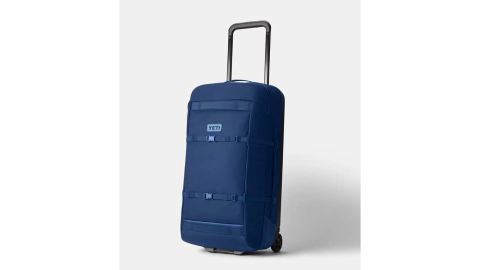
This bag from Yeti came out of our tests filling a similar role as the Timbuk2 Copilot. It’s super durable and ready for the roughest adventures, but it has only two wheels, so its maneuverability is limited. Compared to the Copilot, it’s a bit more durable, but it’s heavier and doesn’t fit as much. That on top of the fact that it’s almost $200 more expensive, and we think the Timbuk2 Copilot is the better buy if you’re searching for an ultra-sturdy suitcase.
Briggs & Riley Medium Expandable Spinner

This suitcase from Briggs & Riley was a great contender, but since its telescopic handle is on the outside of the case, it was super wobbly when we were rolling it around. Plus, this build means that when you’re carrying it up and down stairs, the frame for the handle can dig into your legs and side, making for an uncomfortable experience. Besides the handle, this suitcase is really great, but at $529, it just couldn’t beat out our other winners.
Briggs & Riley Baseline Softside CX Expandable Medium Checked Spinner
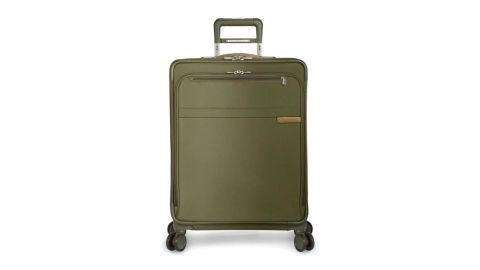
If you have the money to spend and want to splurge on a soft-shelled suitcase, this might be the one to go for. The Briggs & Riley Baseline Softside CX is not only gorgeous, but its interior expansion technology is a genius way to fit as much as possible into your bag. You can expand the bag by about 2 inches, and after stuffing the suitcase full you can compress the entire bag back down to its original size. Even though we loved this feature, the bag definitely had its downsides as well. Unfortunately, it has the same problem as the other Briggs & Riley suitcase with an exterior telescopic handle, and during our abrasion tests, it got a hole right in the middle of the fabric.
Tumi Short Trip Expandable 4-Wheeled Packing Case
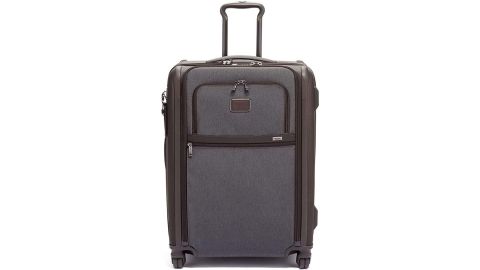
This Tumi suitcase was the heaviest we tested, weighing in at 16.6 pounds. The wheels felt smooth when we rolled the bag around, but they got stuck on cracks and caused the suitcase to jump more than others we tried. The carrying handles are thin and uncomfortable, and when you pair that with the bag’s heavy weight, it was by far the hardest bag to carry up and down stairs. The Tumi bag looks fantastic and has great organization on the interior and exterior, but we just don’t think the price tag is worth it.
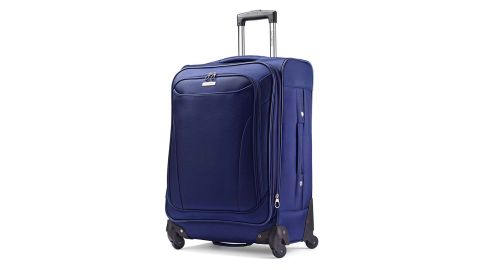
This Samsonite bag couldn’t fit our standard pack, it had small wheels that got stuck on cracks often and the plastic on the bottom near the wheels cracked in our drop test. If you’re looking for a low-cost suitcase, you’re much better off with the SwissTech Executive.
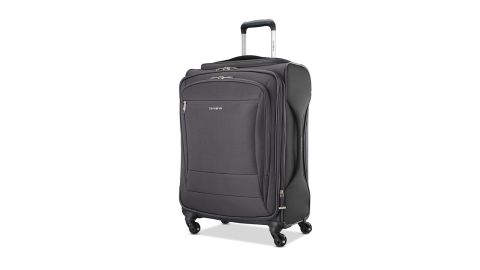
This suitcase from Samsonite had comfortable handles, and its telescopic handle had an outstanding 13 different height settings. However, it barely fit our standard pack, wasn’t as maneuverable as our winners and, unfortunately, did the worst in our abrasion test. There were multiple areas of the front material that were completely torn.
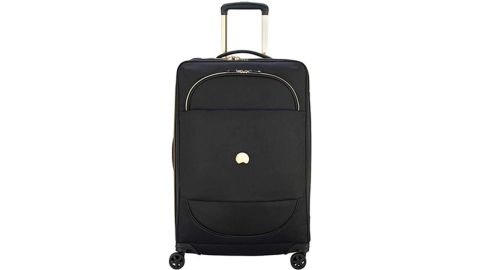
This Delsey Paris suitcase had a middle-of-the-road performance in most tests but couldn’t outshine our winners in capacity, maneuverability or durability. If you’re considering this bag, you should know the zippers were extremely hard to zip and unzip, and the wheels were small, so they got stuck on a lot of cracks in our testing.
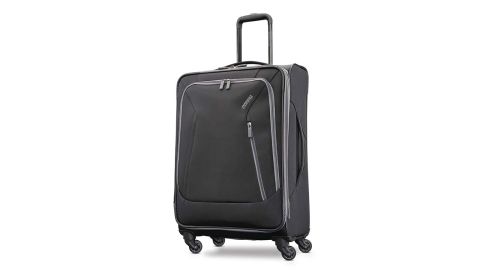
Our biggest gripe with this American Tourister suitcase is its tiny wheels. The small size made them very prone to getting stuck on cracks, which made for a frustrating rolling experience. If you spend $30 more, you can get a much better bag in the SwissTech Executive.

Like the other American Tourister we tested, the Belle Voyage had tiny wheels that got stuck on cracks. This suitcase also didn’t fare well in our abrasion tests, where it got a big hole in the middle of the front fabric.
Looking for a travel credit card? Find out which cards CNN Underscored chose as our best travel credit cards of 2022.
Source: https://www.cnn.com/2022/02/17/cnn-underscored/soft-sided-checked-luggage/index.html?iid=CNNUnderscoredHPcontainer















